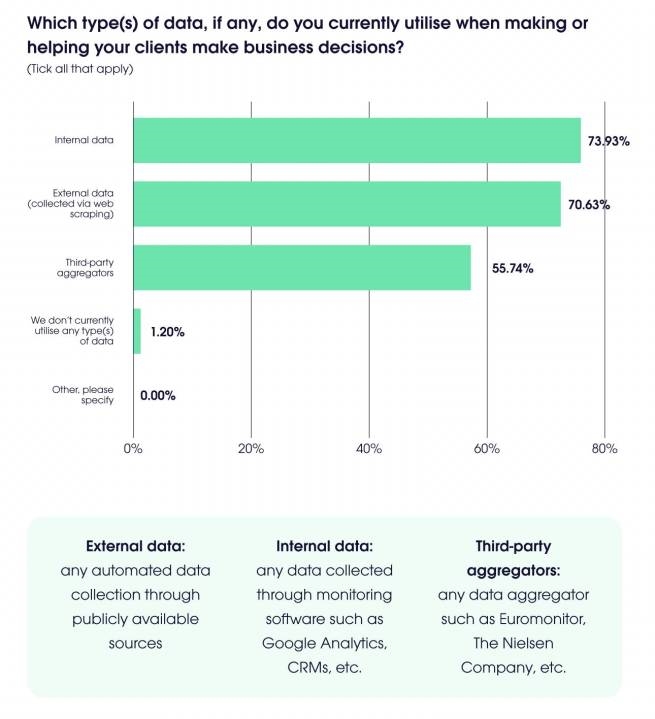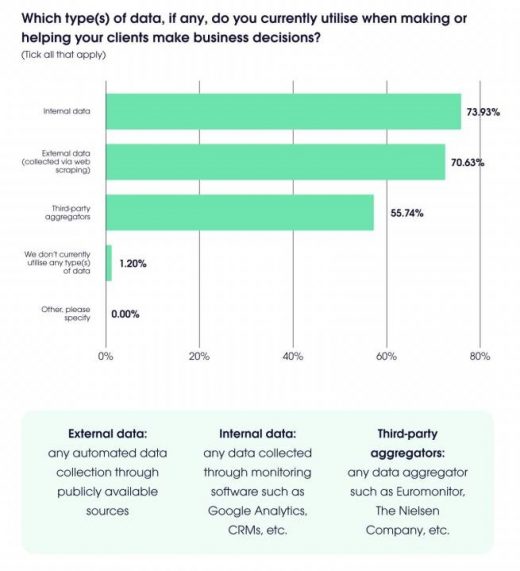How Alternative Data is Changing the Finance Sector
How Alternative Data is Changing the Finance Sector

Alternative data has been touted as the future for various companies. Financial services companies have taken a particular interest in the field as it has the potential to either provide completely novel signals or improve existing investment strategies.
However, understanding the scale and importance of alternative data has always been challenging as businesses in the sector are often shrouded in mystery. Investing is extremely competitive as alpha often depends on the signal strength other companies can acquire.
Now, however, the veil has been lifted, even if slightly. Finally, there is enough data to understand how far alternative data and web scraping have entrenched themselves into the industry, allowing us to understand their importance.
What is alternative data and web scraping?
Alternative data is a negatively defined term meaning everything that is not traditional data. The latter is considered to be everything that’s published regularly according to regulations, government action, or other oversight. In other words, it’s all the data from statistics departments, financial reports, press releases, etc.
Since alternative data is defined negatively, it’s every information source that’s not traditional. While the definition is somewhat broad, alternative data does have its characteristics. Namely, it’s almost always unstructured, comes in various formats (i.e., text, images, videos), and often is extracted for a highly specific purpose.
Data acquisition is significantly more complicated because both the sources and the formats are varied. Data as a Service (DaaS) businesses can resolve most of the acquisition issues; however, finding one that holds the necessary information can be complex.
Web Scraping and in-house solutions in alternative data acquisition
Many companies turn to building in-house solutions for alternative data acquisition. One of the primary methods for doing so is called web scraping. In short, it’s a method of automating online public data collection by employing bots.
These solutions go through a starting set of URLs and download the data stored within. Most bots will also further collect any URLs stored on the page for continued crawling. As a result, they can blaze through many sources within seconds or minutes.
Collected data is then delivered and parsed for analysis. Some of it, such as pricing information, can be integrated into completely automated solutions. Other data, such as anything from which investment signals might be extracted, is analyzed manually by dedicated professionals.
Web scraping is shaping the financial services industry
As mentioned above, financial services and investment companies have taken a particular interest in web scraping earlier than nearly anyone else. These businesses thrive upon gaining an informational edge over their competitors or the market as a whole.
So, in some sense, it was no surprise when web scraping turned out to be a key player in the financial services industry. So we surveyed over 1000 decision-makers in the financial services industry across the US and UK regions to find out more about how data is being managed in these companies.

Image Credit: Oxylabs; Thank you!
While internal data, as expected, remains the primary source of insight for all decision-making, web scraping has nearly overtaken it in the financial services industry. Almost 71% of our respondents have indicated that they use web scraping to help clients make business decisions.
Web Scraping and Growth Tendencies
Other insights are even more illuminating. For example, while web scraping has shown clear growth tendencies, we didn’t expect 80% of the survey respondents to believe that the focus will shift towards it even more in the coming 12 months. Nevertheless, these trends indicate a clear intent to change the dominant data acquisition methods in the industry.
Finally, there’s reason to believe that the performance of web scraping is equally as impressive. There may have been reason to believe that the process of automated data collection is simply a byproduct of hype. Big data has been a business buzzword for the longest time, so it may seem that some of that emotion might have transferred to web scraping.
Implementing Web Scraping
However, those who have implemented web scraping do not seem to think it’s pure hype. Over a quarter of those who have implemented the process believe it has had the most significant positive impact on revenue. Additionally, nearly half (44%) of all respondents plan to invest in web scraping the most in the coming years.
Our overall findings are consistent across regions. As the US and UK are such significant players in the sector, the conclusions likely extend to global trends, barring some exceptions where web scraping might be trickier to implement due to legal differences.
The survey has only uncovered major differences in how web scraping is handled, not whether it’s worthwhile. For example, in the US, it’s rarely the case that compliance or web scraping itself would be outsourced (12% & 8%, respectively). On the other hand, the UK is much more lenient regarding outsourced departments (22% and 15% for outsourced compliance and outsourced web scraping, respectively).
Conclusion
While the way data is being managed in the financial services industry has been shrouded in mystery for many years, we’re finally getting a better glimpse into the trends and changes the sector has been undergoing. As we can see, web scraping and alternative data play a major role in shaping the industry.
Becoming the true first adopters of web scraping, however, I think, is only the beginning. Both the technology and the industry are still maturing. Therefore, I firmly believe we will see many new and innovative developments in data extraction and analysis in the finance sector, which novel web scraping applications will head.
Image Credit: Pixabay; Pexels; Thank you!
The post How Alternative Data is Changing the Finance Sector appeared first on ReadWrite.
(33)


